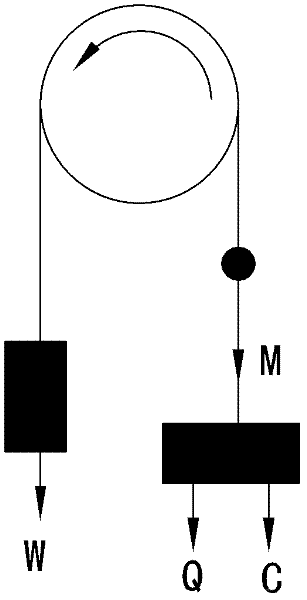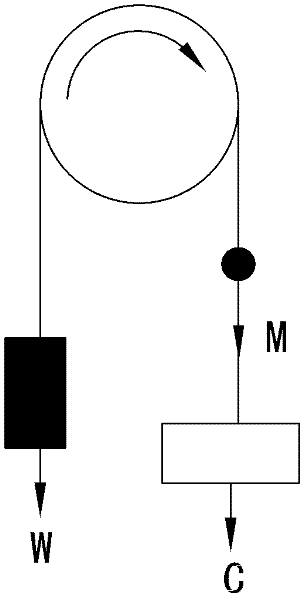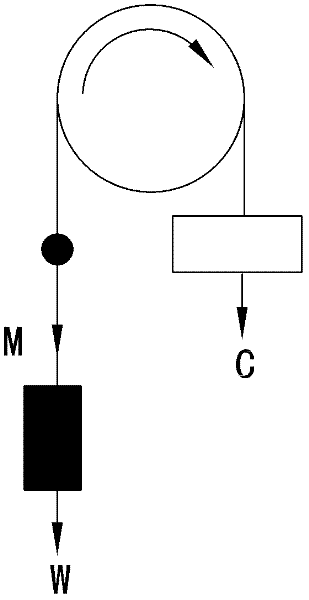Method for testing elevator balance coefficient by aid of elevator handwheel
A technology of balance coefficient and elevator, applied in elevators, transportation and packaging, etc., can solve the problems of large system comprehensive errors, large reading errors, large drawing errors, etc., and achieve the goal of overcoming system comprehensive errors, saving labor and time, and reducing errors cumulative effect
- Summary
- Abstract
- Description
- Claims
- Application Information
AI Technical Summary
Problems solved by technology
Method used
Image
Examples
Embodiment Construction
[0038] The present invention will be described in further detail below in conjunction with the accompanying drawings and specific embodiments. Embodiment: a method for testing the balance coefficient of an elevator by using the hand wheel of the elevator, comprising the steps of:
[0039] 1) After the elevator load operation test is completed, install the cranking torque test device on the manual cranking handwheel of the elevator, and use the cranking torque test device to test the cranking torque values A1, A2 and A3;
[0040] 2), test data processing, according to the principle of torque balance, calculate the step of the relationship formula K=i×(A2+A3) / 2(A1+A2) between the cranking torque value and the elevator balance coefficient, where i is the test load and rated Scale factor for loads.
[0041] The step 1) is specifically completed by the following steps:
[0042] ①, see figure 1 After the elevator load operation test is completed, the elevator runs and stops at ...
PUM
 Login to View More
Login to View More Abstract
Description
Claims
Application Information
 Login to View More
Login to View More - R&D
- Intellectual Property
- Life Sciences
- Materials
- Tech Scout
- Unparalleled Data Quality
- Higher Quality Content
- 60% Fewer Hallucinations
Browse by: Latest US Patents, China's latest patents, Technical Efficacy Thesaurus, Application Domain, Technology Topic, Popular Technical Reports.
© 2025 PatSnap. All rights reserved.Legal|Privacy policy|Modern Slavery Act Transparency Statement|Sitemap|About US| Contact US: help@patsnap.com



